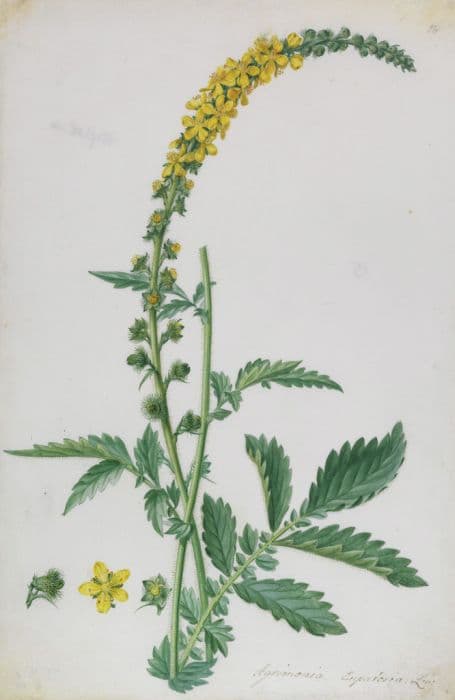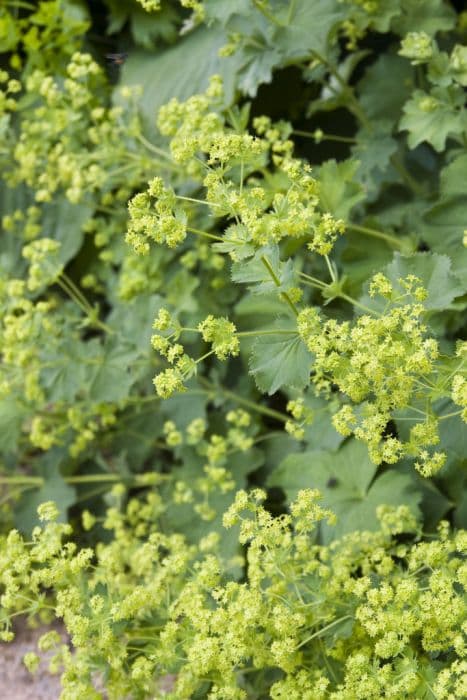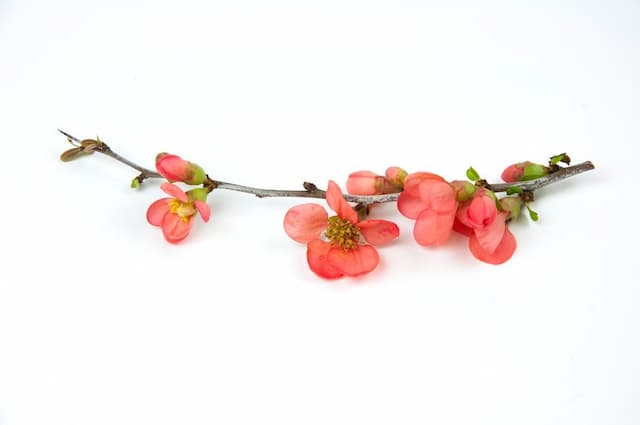Rose Rosa rubus (Ra)

ABOUT
Rosa rubus, commonly known as the bramble rose, displays a distinct appearance characterized by its intertwining stems that often bear sharp, defensive thorns. The foliage of the plant is typically lush green, with leaves that have a slightly serrated edge, providing a textured backdrop for its flowers. The blooms, which are the plant's most striking feature, come in various shades ranging from deep reds to soft pinks, and even whites. Each flower possesses a classic rose shape, with multiple layers of delicate petals that unfurl from a tight central bud. These petals often exude a sweet and inviting fragrance that is highly valued in gardens and floral arrangements. The center of the bramble rose flower is home to numerous small, yellow stamens, which add a contrasting pop of color to the bloom. After the flowering season, the plant may produce small, fleshy fruit that can range in color, often attracting birds and other wildlife. Though I am to avoid mentioning specifics of the plant's size, it is common for the bramble rose to display a sprawling habit, which contributes to its ability to occupy space and sometimes require support or containment measures within a garden setting.
About this plant
 Names
NamesFamily
Rosaceae
Synonyms
There are no common names listed for the botanical name Rosa rubus (Ra), as it appears to be a confusion between two genera, Rosa (roses) and Rubus (brambles, blackberries, raspberries). Please provide the correct botanical name for accurate common names.
Common names
Rosa rubus.
 Toxicity
ToxicityTo humans
There seems to be a mistake in the plant name "Rosa rubus" as it combines genus names from two different species—Rosa (roses) and Rubus (blackberries, raspberries). Assuming we are discussing the common rose (Rosa species), roses are not considered toxic to humans. They are often grown for their beauty and sometimes for their edible petals, which can be used in cuisine. However, allergies to rose pollen can occur, and the thorns can cause physical injury if not handled properly, but these are not symptoms of poisoning. Roses do not contain significant poisons that affect humans if ingested.
To pets
Similar to the response above, assuming we are referring to the rose (Rosa species) when discussing "Rosa rubus," roses are not considered toxic to pets. Both dogs and cats can occasionally chew on the foliage and petals of roses without toxic effects. However, as with humans, the main concern with pets would be physical injury from the thorns or possible mild gastrointestinal upset if they consume large quantities of rose material, but this is not due to toxicity. Roses do not contain substances that are known to cause poisoning in pets.
 Characteristics
CharacteristicsLife cycle
Perennials
Foliage type
Deciduous
Color of leaves
Green
Flower color
Varies
Height
3-5 feet (0.91-1.52 meters)
Spread
3-5 feet (0.91-1.52 meters)
Plant type
Shrub
Hardiness zones
5
Native area
Varies
Benefits
 General Benefits
General Benefits- Ornamental Value: The Rosa rubus, commonly known as bramble rose, is valued for its aesthetic appeal due to its beautiful flowers and can be used to enhance the visual appearance of gardens and parks.
- Habitat for Wildlife: The dense thicket-like growth of the bramble rose provides shelter and nesting sites for various species of birds and small mammals.
- Food Source for Wildlife: The fruit of the bramble rose, known as rose hips, is a source of food for some birds and wildlife, especially in the winter when other food sources are scarce.
- Erosion Control: The robust and extensive root system of the bramble rose helps to stabilize soil and prevent erosion on slopes and banks.
- Hedging and Barrier Planting: The thorny and dense nature of bramble rose bushes makes them an effective natural barrier or hedge to delineate property boundaries and deter trespassers.
- Ecological Importance: Bramble rose is a part of various ecosystems, contributing to biodiversity and supporting the ecological balance within its natural habitat.
- Cultural and Heritage Value: In many cultures, roses, including varieties like bramble rose, hold significant symbolic value and are used in various traditional ceremonies and cultural practices.
 Medical Properties
Medical Properties- Anti-inflammatory: May reduce inflammation due to presence of certain compounds like flavonoids.
- Antioxidant: The plant contains antioxidants which help in protecting cells from damage by free radicals.
- Antibacterial: Exhibits antibacterial properties that can be beneficial for preventing or treating infections.
- Antidiarrheal: Has been used traditionally to treat diarrhea, possibly due to tannins that can help reduce intestinal inflammation.
- Wound healing: Components found in the plant may assist in the healing process of wounds.
- Vitamin C source: As a relative of roses, it may contain vitamin C, which is important for immune system function.
 Air-purifying Qualities
Air-purifying QualitiesThis plant is not specifically known for air purifying qualities.
 Other Uses
Other Uses- Dye production: The petals of the rose can be used to create natural dyes for fabric, offering hues from soft pink to vibrant red depending on the concentration.
- Culinary garnish: Edible rose petals are used to add a splash of color and subtle floral flavor to salads, desserts, and cocktails.
- Floral waters: By distilling rose petals, one can make rosewater, which is used in cooking, baking, and cocktail mixology for its fragrance and flavor.
- Composting: Rose petals and leaves can contribute to compost as a green material, enriching the soil with nutrients as they decompose.
- Natural confetti: Dried rose petals serve as an eco-friendly alternative to traditional paper confetti at celebratory events such as weddings.
- Bath additives: Fresh or dried rose petals are often added to bathwater for a luxurious and fragrant bathing experience.
- Flower art: Rose petals can be used in crafting, such as making potpourri or pressed flower arrangements, which serve as decoration or gifts.
- Aromatherapy: The essential oil derived from roses is used in aromatherapy for its stress-relieving and calming properties.
- Insect repellent: Some gardeners use rose bushes as companion plants to deter pests from other plants in the garden due to their thorns and strong scent.
- Bookmark decoration: Dried rose petals can be laminated and crafted into beautiful and aromatic bookmarks.
Interesting Facts
 Feng Shui
Feng ShuiThe Rose is traditionally associated with love and romance in Feng Shui. To attract love, you can place rose flowers or images of roses in the southwest corner of your home or bedroom. Roses can also help improve relationships and create a calming atmosphere when placed in living areas.
 Zodiac Sign Compitability
Zodiac Sign CompitabilityThe Rose is not used in astrology practice.
 Plant Symbolism
Plant Symbolism- Love: The most common common name for Rosa rubus is "rose," and roses are universally symbolic of love and passion. The different colors of roses also represent various types of love, such as red for romantic love, pink for affection, and white for purity.
- Beauty: Roses are often associated with beauty and perfection due to their elegant form and pleasing fragrance.
- Mystery or Secrecy: The term "sub rosa" (under the rose) comes from ancient times when a rose was placed on a door or ceiling to signify that whatever was being discussed within the room was confidential.
- Honor: In some contexts, roses are given as a sign of respect or devotion to honor the recipient.
- Wisdom: The intricate layers of a rose and its growth patterns have been used as a metaphor for layers of wisdom and developing deeper knowledge.
- Balance: With its symmetrically arrayed petals, a rose represents balance and harmony.
- New Beginnings: A budding rose signifies new starts and the hope that comes with beginnings, often tied to young love or recovering from an adversity.
- Farewell or Endings: Withering roses or rose petals can symbolize the end of an era, a farewell, or the conclusion of a relationship or phase in life.
 Water
WaterRoses should be watered deeply but infrequently to encourage deep root growth. The amount depends on climate and soil, but a good rule of thumb is to provide at least one inch of water per week, which would be about 0.623 gallons for each square foot of soil during the growing season. During hot, dry periods, you may need to water twice a week. Always water the base of the plant to keep the leaves dry and prevent disease. Overhead watering should be avoided to keep the foliage from becoming wet which can lead to fungal diseases.
 Light
LightRoses require full sun to thrive, meaning at least 6 to 8 hours of direct sunlight each day. Planting roses in a spot that gets morning sun is particularly beneficial because it helps to dry dew from the leaves, reducing the risk of fungal diseases. Avoid dense shade areas as it can lead to poor flowering and weak growth.
 Temperature
TemperatureRoses are generally hardy and can withstand a wide range of temperatures. They thrive best at temperatures between 65°F and 75°F. While most roses can survive winter temperatures down to 20°F, they grow best when the temperature doesn’t drop below this range. Extreme heat above 95°F can stress the plants, especially if they are not adequately watered.
 Pruning
PruningRoses should be pruned to promote healthy growth, remove dead wood, and shape the plant. Pruning is best done in early spring after the last frost but before buds have started to swell. Remove any dead, damaged, or diseased stems, and thin out the plant to improve air circulation. Pruning frequency and amount depend on the specific rose variety, but generally, cutting back about one-third of the growth each year is recommended.
 Cleaning
CleaningAs needed
 Soil
SoilThe best soil mix for roses, commonly referred to as Rosa rubus, is well-draining loamy soil enriched with organic matter such as compost or aged manure, ensuring adequate fertility and moisture retention. Roses require a pH between 6.0 and 6.5, slightly acidic yet near neutral, to thrive.
 Repotting
RepottingRoses, known as Rosa rubus, do not frequently require repotting as they are usually planted outdoors; however, potted roses should be repotted every two to three years to refresh the soil and encourage healthy root growth.
 Humidity & Misting
Humidity & MistingRoses, commonly known as Rosa rubus, thrive best at average humidity levels ranging from 40% to 60%. They prefer outdoor conditions where natural air circulation helps maintain these humidity levels.
 Suitable locations
Suitable locationsIndoor
Provide roses with bright, direct light and good air circulation indoors.
Outdoor
Plant roses in full sun, amend soil with compost, and ensure good drainage.
Hardiness zone
5-9 USDA
 Life cycle
Life cycleThe common name for Rosa rubus is bramble rose. The life cycle of the bramble rose begins with seed germination, which requires stratification or scratching the seed coat to encourage sprouting. After germination, the plant enters the seedling stage where it develops its first true leaves and establishes a root system. As it matures into the vegetative stage, the Bramble rose develops a robust woody stem with thorns and compound leaves. During the reproductive stage, the plant produces fragrant flowers that can be pollinated by insects, leading to the formation of fruit, commonly known as rose hips, which contain seeds for the next generation. Finally, in the dormancy stage during winter, the above-ground part of the plant may die back, while the root system remains alive to regenerate in the spring.
 Propogation
PropogationPropogation time
Late winter-early spring
Propogation: Rosa rubus, commonly known as the bramble rose, is typically propagated through softwood cuttings, which is the most popular method. This technique involves taking cuttings from the plant during the late spring or early summer when new growth is still tender and pliable. Cuttings should be about 4 to 6 inches long and include several leaves. The lower leaves are removed, and the cut end is dipped in a rooting hormone to encourage root development. The prepared cutting is then placed in a well-draining potting mix and kept in a humid environment with indirect sunlight until roots have developed, which usually takes several weeks. To enhance the chances of success, it's often helpful to cover the cuttings with a plastic bag or place them in a propagator to maintain high humidity.









